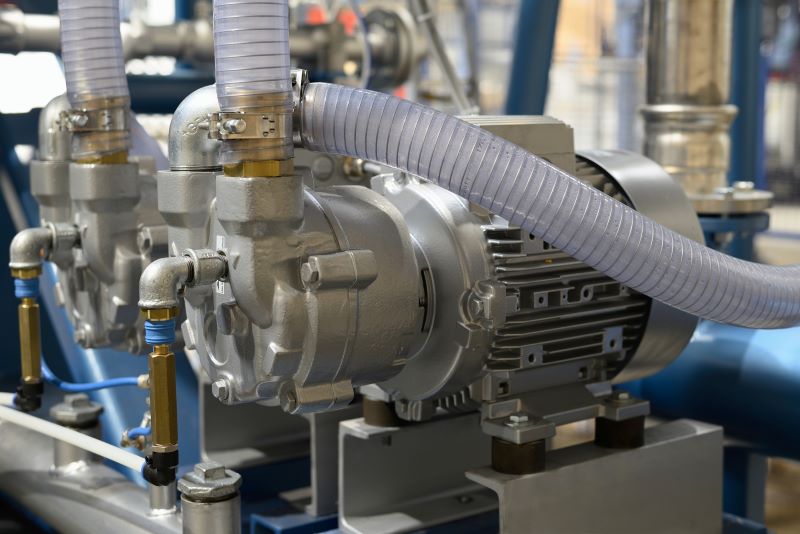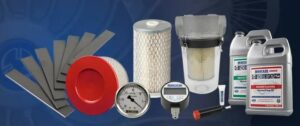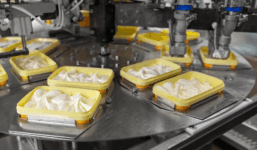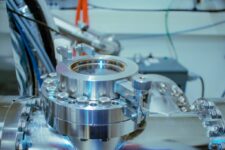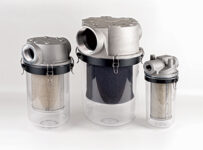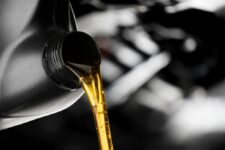Heat is a natural byproduct of all types of vacuum pumps. It’s the result not only of friction between the pump’s moving parts but also of the gas compression processes needed to create a vacuum.
While unavoidable, the heat produced by your vacuum pumps needs to be managed to ensure efficient pump operation and prevent overheating, which can damage your equipment.
Continue reading to learn more about heat and its effect on vacuum pump operation, specifically:
- What causes vacuum pumps to generate heat
- What normal vacuum pump heat looks like
- Excessive heat and its impact on your pumps
- Practical steps for managing and reducing vacuum pump heat
HOT TOPIC: HOW TO HANDLE VACUUM PUMP HEAT
If you are running vacuum pumps you are managing heat. Pumps of all types naturally produce heat. Key sources of heating include:
- Friction: Moving parts, such as rotors and vanes, create friction, which generates heat as the pump operates.
- Gas Compression: Compressing gas molecules during the vacuum process releases heat as a byproduct.
- Energy Loss: Converting electrical energy into mechanical work produces residual heat.
While heat is expected during operation, monitoring and managing it is important. Proper heat management supports efficient performance and avoids long-term damage.
WHAT IS A NORMAL HEAT LEVEL?
Understanding the normal operating temperature for your vacuum pump is essential to ensure it runs efficiently. Operating temperatures vary widely by pump type (see table) but are also the result of other factors, including:
- Vacuum level: The deeper the required vacuum for your application, the harder your pump will work.
- Demand: Vacuum capacity is fixed. The higher the load or demand on your vacuum capacity, the greater the pressure on your pump.
- Ambient temperatures: Higher atmospheric temperatures make it harder for your pump’s built-in cooling features to work.
- Cooling efficiency: The ability of your vacuum pump to cool itself determines how effectively it will be able to handle added demand or higher ambient temperatures.
How can you tell your pump is operating normally? Many vacuum pump models come with temperature gauges or may be available as an accessory. Check your manual for your unit’s normal operating temperature and monitor your gauge.
Also, look for signs that your pump produces excessive heat, such as noise or unexpected sound, burning odors, and discoloration of the housing or components.
THE IMPACT OF EXCESSIVE HEAT
Let’s examine some of the ways that excessive operating heat can affect your vacuum pump’s operation and integrity.
1. THERMAL EXPANSION
Extreme heat causes metal components to expand, pushing parts beyond their designed tolerance. This can cause excessive friction where rotors or vanes contact the pump housing, and cause parts like bearings to become misaligned, increasing wear and reducing the efficiency with which your pump operates.
2. DEGRADATION OF LUBRICANTS
High temperatures can burn off oil or cause it to thicken and form a sludge. That’s a big problem, especially for oil-lubricated pumps that rely on oil “flooding” to virtually eliminate friction. Poorly performing lubricants increase friction and wear between contacting surfaces and can cause bearings or working chamber components to overheat.
3. LOSS OF STRUCTURAL INTEGRITY
Prolonged exposure to excessive heat weakens materials like seals, gaskets, and polymer components. Seals and gaskets may crack, shrink, or become brittle, while polymer-based components may warp or melt.
4. FRICTION-INDUCED WEAR
Heat increases friction between moving parts, especially in dry-running pumps without oil lubrication. Vanes wear out more quickly, potentially leading to breakage or reduced performance. Rotor and cylinder/pump body surfaces may become uneven, causing vibration and inefficiencies.
5. MOTOR OVERHEATING
Heat affects the electric motor by raising the temperature of windings and other electrical components. This may cause the insulation of the motor windings to degrade, increasing the risk of short circuits or motor failure, while the strain on the motor can lead to burnout or irreversible damage.
6. VALVE AND FILTER FAILURE
High temperatures can degrade or deform internal valves and filters. Filters may clog or collapse, restricting airflow and increasing system strain. Valves can become restrictive, not allowing air to flow into the pump for cooling, reducing the overall efficiency of your vacuum pumps.
7. CONDENSATION AND CORROSION
Extreme heat fluctuations can cause vapor inside the pump to condense, particularly when the pump cools rapidly. This can lead to the corrosion of metal components, forming rust or other deposits that can reduce efficiency and increase wear.
8. VIBRATION AND NOISE
Thermal stress can create imbalances in rotating components, causing vibration that accelerates wear on bearings, rotors, and mounts, resulting in higher noise levels.
9. PREMATURE COMPONENT FAILURE
Excessive heat accelerates the natural aging process of materials and components, which can shorten the lifespans of critical parts like bearings, vanes, seals, and motors. The resulting component failures cause more frequent breakdowns, increasing downtime and maintenance costs.
MANAGING AND REDUCING HEAT
How can you prevent overheating and keep your equipment within its normal operating range? Here is a checklist of practical steps to limit potential damage to your equipment.
| Practical Solutions for Managing and Reducing Heat | |
|---|---|
| ✔ Ensure Proper Ventilation | Position the pump in a well-ventilated area or use ducting to remove hot air. |
| ✔ Install Pump Enclosures and Fans | Use specialized pump enclosures with built-in fans to manage temperature levels. |
| ✔ Perform Regular Maintenance | Follow our maintenance schedule for inspections, cleaning, and replacements. |
| ✔ Monitor Oil Levels | Check and top off oil levels regularly with Becker Original lubricants. |
| ✔ Use Cooling Systems or Water-Cooling Options | Install a water-cooling system or external cooling mechanism supported by your pump. |
| ✔ Choose the Right Pump for the Application | Consult Becker experts to select a pump suited to your specific operating conditions. |
| ✔ Clean Filters Regularly | Check and replace filters per manufacturer guidelines to ensure unrestricted airflow. |
| ✔ Check for Leaks | Inspect hoses, seals, and connections regularly, and repair any leaks. |
| ✔ Avoid Overloading the Pump | Operate the pump within its rated capacity. Consider adding redundancy. |
| ✔ Use Temperature Sensors or Alarms | Install temperature monitors or alarms to alert you to excessive heat. |
| ✔ Optimize Ambient Conditions | Maintain moderate temperatures and airflow in the pump room or area. |
| ✔ Install Variable Frequency Drives (VFDs) | Retrofit your system with VFDs for better motor control and energy efficiency. |
DIAGNOSING THE ROOT CAUSE OF OVERHEATING
An overheating vacuum pump can display a range of “symptoms” making identifying a single root cause difficult. Sometimes, this might be as straightforward as a blocked cooling vent or excessive loading on a single pump. In others, it can be a complex mix of factors. Use the following checklist to help narrow down the potential causes.
| Overheating Troubleshooting List |
| 1. Visual Inspection ✔ Ensure proper ventilation around the pump. Look for obstructions near vents, cooling fans, or enclosures. ✔ Inspect for signs of wear, discoloration, or damage to external components. |
| 2. Monitor Operating Parameters ✔ Record the operating temperature using a temperature gun or built-in sensors. ✔ Compare the recorded temperature to the manufacturer’s specified range. |
| 3. Inspect Cooling Systems ✔ Ensure that air-cooling fans or liquid cooling systems are functioning. ✔ Check for blockages in cooling channels or water lines. ✔ Verify that cooling fluids (if applicable) are at proper levels and free of contaminants. |
| 4. Check Lubrication ✔ Confirm the oil level is within the recommended range. ✔ Inspect the oil for signs of degradation, contamination, or improper viscosity. |
| 5, Inspect Filters and Valves ✔ Examine inlet and outlet filters for clogs or excessive dirt. ✔ Check valves for proper operation and sealing. |
| 6. Look for Air Leaks ✔ Inspect hoses, connections, and seals for leaks. ✔ Use a leak detector or soapy water to pinpoint leaks if necessary. |
| 7. Evaluate Load and Operating Conditions ✔ Confirm the pump is operating within its rated vacuum level and flow capacity. ✔ Determine if the pump is running continuously or at peak load for extended periods. |
| 8. Evaluate the Motor ✔ Measure the motor’s current draw with an ammeter. ✔ Compare readings to the motor’s rated full load amperage (FLA). ✔ Inspect wiring for loose connections or damage. |
| 9. Assess the Environment ✔ Note ambient temperature and humidity levels in the pump’s operating area. ✔ Identify whether other equipment nearby contributes to excessive heat. |
| 10. Test Performance Under Controlled Conditions ✔ Run the pump isolated from its usual system to see if overheating persists. ✔ Monitor vacuum levels and performance in a controlled test. |
For complex overheating problems, or where it’s critical to find a solution quickly, reach out to experts for help. Becker’s technical team is always available to help with diagnostics and repairs.
PREVENTING FUTURE PROBLEMS
Stay ahead of potential problems by adopting proactive measures. Here’s how you can maintain optimal operating conditions and avoid costly downtime:
- Regular Maintenance: Clean and inspect your pump routinely to ensure all components function efficiently. Replace worn-out parts, seals, and bearings before they lead to overheating. Schedule professional service to check for potential issues early.
- Monitor Operating Conditions: Use temperature sensors to track your pump’s heat levels. Compare operating temperatures with the pump’s recommended range to identify any anomalies.
- Proper Cooling Systems: Ensure cooling systems, whether air- or water-based, are operating effectively. Keep fans and air circulation unobstructed to maintain efficient heat dissipation.
- Optimize Environmental Factors: Position the pump in a well-ventilated area with adequate airflow. Avoid placing the pump in high ambient temperature environments or near other heat-generating equipment.
- Use Becker Original Parts: Replace components with Becker Original parts to ensure compatibility and reliability. High-quality parts maintain the pump’s efficiency and reduce the likelihood of overheating.
KEEP IT COOLER: MAKE IT BECKER
Heat is inevitable when running vacuum pumps, but excessive heat can hinder performance and shorten equipment lifespan.
At Becker, we’ve been designing, building, and supporting high-quality vacuum pump systems in the U.S. for over 50 years. We’re trusted by manufacturers, producers, and facilities operators around the world to produce equipment that keeps running long after our competitors have quit. We make pumps that run cooler, operate longer, and consume less energy doing it.
Choosing Becker’s precision-engineered, high-efficiency vacuum pumps is a great first step toward controlling and minimizing pump heating. Working with our experts to manage performance over the long lifetime of your pump is even smarter.
Let our expert technical support team assist you with identifying and addressing your pump overheating issues, or call us for a proactive management plan to prevent issues before they happen. We’ll help you maintain uptime and optimal performance so you can get the most out of your investment in quality Becker equipment.
Contact us today to get started.
